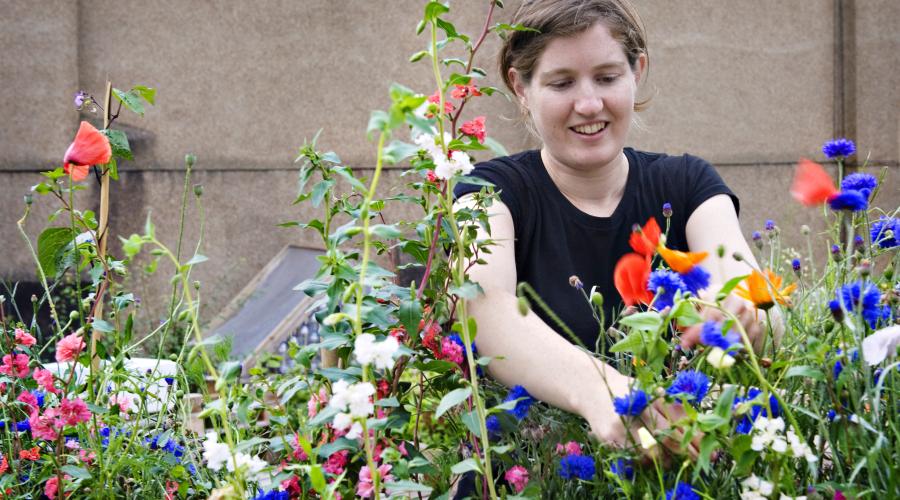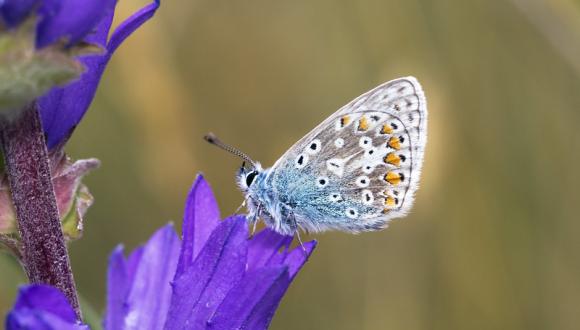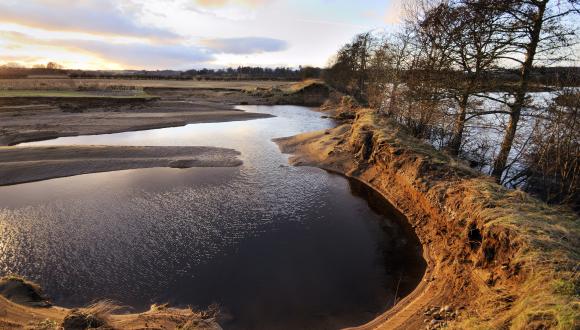
Biodiversity - what can you do?
Discover how you can help to enhance biodiversity in your daily life, whether you’re at home, work or school.
Biodiversity for everyone
There are lots of things you can do to help biodiversity and there’s so much you can gain by getting out and enjoying our great outdoors. You can record what wildlife you see, help create wildlife habitats and encourage other people to help out too. If you scroll down we also have specific information and ideas for land managers, businesses, policy makers, public bodies, teachers and community groups.
- Experience nature on your doorstep. Getting active outdoors is easy, cheap, fun and good for your health. Through exploring Scotland's great places to visit you can learn more about our special nature.
- Wildlife surveys. Citizen science is a fun way to get involved in science projects, often without any previous knowledge needed. Have a look at our Citizen Science survey ideas and you can help to build a picture of the state of Scotland’s wildlife and determine what actions we need to take to protect it.
- Buy and grow biodiversity-friendly food. Growing food needs biodiversity – from the insects that pollinate the crops to clean water and healthy soil. By buying seasonally and locally you can support this biodiversity, or you can make space for biodiversity through growing some of your own food.
- Make Space for Nature. There are many different ways to Make Space for Nature in your life, so check out what you can do this summer.
- Get others involved. If you’re getting involved in biodiversity projects, tell people about it! You’ve made a difference, so why not share it on social media, in your school or in the workplace?
Biodiversity video - what you can do to help nature
Land managers
Much of Scotland’s biodiversity is found in and around farmland, forests or on sporting estates. How you use that land can make a huge difference. Find out how you can get funding to help biodiversity and read advice on managing different types of land.
At sea
Find out how you can help manage our coasts and seas to preserve their biodiversity, and read more about invasive non-native species if you're a boat or ship user. If you're just at the sea to enjoy its beauty and wildlife, we can all minimise our impacts through following the Scottish Marine Wildlife Watching Code. You can help to create a better environment for marine species through joining a litter monitoring or reduction scheme such as Beachwatch.
Teachers
If you’re a teacher, consider how you can engage your students in a biodiversity project. Find out more about education and nature, including free resources, the learning in local greenspace project and some great case studies on how to best do teaching in nature. Many citizen science projects are suitable for both younger and older children and can be a really fun way to learn outside.
Businesses
Scotland’s outstanding natural environment can be an incentive to attract business, and helping employees and the public enjoy biodiversity will add value to the workplace and increase well-being. Making biodiversity part of your day-to-day activities don't have to be costly, and it's a good idea to make a long-term biodiversity plan for your business. If you have some outdoor space, consider setting up a wildlife garden and let your grounds become 'untidy' for the benefit of wildflowers, birds and pollinators.
Even without outdoor space, there are plenty of quick and easy ways your organisation can help conserve biodiversity:
- Sponsor a species or habitat and raise funds for a local wildlife trust or charity.
- Have a noticeboard to tell staff and visitors what you are doing to encourage biodiversity on site or nearby. You could include a section on wildlife gardening (e.g. the best native species to grow; which plants to grow for butterflies, bees and other beneficial insects; and where to get a compost bin).
- Hang bird feeders, plant up some window boxes and planters with native species – they’ll both look great and encourage wildlife. Make sure you use peat-free compost in these.
- Consider your own supply chain - how are your purchases affecting biodiversity in other parts of the world?
- Have a team conservation day to volunteer for nature.
Policy makers
Scotland’s National Outcome for the environment says that we need to recognise our duty to protect and enhance these assets as essential to our economy, culture, way of life and the well-being of future generations.
Incorporating biodiversity thinking into policy is a ‘win–win’ situation: biodiversity can benefit from policy and policy can benefit from biodiversity. Read "What nature can do for you" by DEFRA, a report on making the most of natural services, assets and resources in policy- and decision-making, or discover the biodiversity policies most relevant to policy-makers.
Public bodies
All public bodies have a duty to further the conservation of biodiversity when carrying out their varied functions and day-to-day activities, and this Biodiversity Duty also applies to the staff of those public bodies. All public bodies also have a duty to report on their actions, once every three years. Whether your organisation is involved directly with green spaces or has only a small office space, there is lots you can do to help so it's a good idea to create a biodiversity plan.
Community groups
If you share a space with other people or are a part of a group that meet regularly, think about working together for nature! Find out more about how communities can help the local environment, and the support available. Already having a group of people that work well together is the perfect starting point for supporting and improving local biodiversity.





